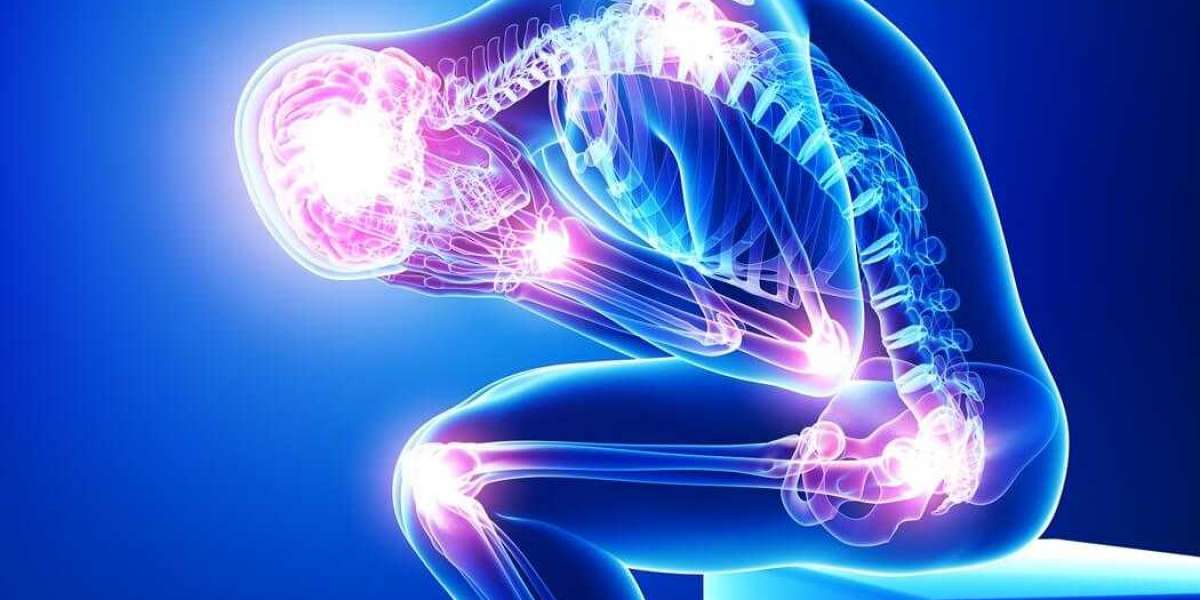Neuropathic pain presents a significant challenge in the aging population, often misunderstood and inadequately addressed. As individuals grow older, the prevalence of neuropathic pain increases, impacting their quality of life and overall well-being. In this article, we delve into the complex relationship between neuropathic pain and aging, debunking common myths surrounding this condition and shedding light on the realities faced by older adults. By examining the unique challenges of diagnosing and managing neuropathic pain in the elderly, as well as exploring effective strategies for relief, we aim to provide valuable insights for healthcare professionals and individuals navigating this intricate intersection of pain and aging.
Understanding Neuropathic Pain in Aging
Definition and Causes of Neuropathic Pain
Neuropathic pain is like that friend who always overstays their welcome at the party – it's persistent and unwelcome. It stems from damage or dysfunction in the nervous system, causing abnormal processing of pain signals. Common culprits include diabetes, shingles, and nerve injuries. Think of it as your body's alarm system going haywire.
How Aging Impacts Neuropathic Pain Symptoms
Aging and neuropathic pain are like that annoying duo that team up against you. As we age, our nerves become less efficient at transmitting signals. This sluggishness can exacerbate neuropathic pain, leading to increased discomfort and challenges in pain management. It's like trying to run a marathon with lead shoes – not fun.
Tapaday is a potent pain relief medication formulated to manage moderate to severe chronic pain. With Tapentadol as its active ingredient, it combines opioid and non-opioid mechanisms to offer fast and sustained relief.
Debunking Common Myths about Neuropathic Pain
Myth: Neuropathic Pain is a Normal Part of Aging
Contrary to popular belief, neuropathic pain is not a "get out of jail free" card that comes with aging. It's more like that uninvited guest who crashes your peaceful retirement party. While age can increase the risk of certain types of pain, neuropathic pain is not an inevitable side effect of getting older. Don't let this myth gatecrash your understanding of pain management in older adults.
Myth: Neuropathic Pain Cannot be Treated Effectively in Older Adults
Think of this myth as the grumpy old neighbor who refuses to change their ways. Neuropathic pain in older adults can be effectively managed through a variety of treatment options, including medications, physical therapy, and lifestyle modifications. Age may bring wisdom, but it doesn't have to dictate your pain management journey.
The Impact of Aging on Neuropathic Pain Perception
Changes in Pain Sensitivity with Age
Aging can be a real pain – literally. As we get older, our pain sensitivity can change, making us more susceptible to chronic pain conditions like neuropathic pain. It's like your pain dial getting turned up to 11 without your consent. Understanding these age-related shifts in pain perception is key to developing tailored treatment approaches for older adults.
Psychological Factors Influencing Neuropathic Pain Experience in Older Adults
Picture this: your mind as the director of a dramatic play called "Neuropathic Pain." Psychological factors like stress, anxiety, and depression can take center stage and influence how older adults perceive and cope with neuropathic pain. It's like adding extra plot twists to an already complex storyline. Addressing these emotional factors is crucial in providing holistic pain relief for older individuals.
Effective Strategies for Managing Neuropathic Pain in Older Adults
Medication Management and Potential Side Effects in the Elderly
When it comes to medications for neuropathic pain, it's like navigating a pharmacy maze – especially for older adults. Certain pain medications may pose risks of side effects or interactions in the elderly population. It's important to work closely with healthcare providers to find the right balance between pain relief and minimizing potential adverse effects. Think of it as finding the perfect cocktail recipe for pain management without the unwanted hangover.
Non-Pharmacological Approaches for Neuropathic Pain Relief
Sometimes the best solutions are found outside the pill bottle. Non-pharmacological approaches like physical therapy, acupuncture, and mindfulness techniques can offer valuable relief for neuropathic pain in older adults. It's like exploring a treasure trove of alternative pain management strategies to find what works best for you. Don't underestimate the power of these non-drug options in your pain relief toolkit.
Addressing the Unique Challenges of Diagnosing Neuropathic Pain in the Elderly
As we age, the likelihood of experiencing neuropathic pain increases, posing unique challenges in diagnosis. Factors like age-related changes in the nervous system and overlapping symptoms with other conditions can complicate identifying neuropathic pain in older adults.
Differentiating Neuropathic Pain from Other Types of Pain in Older Adults
Discerning neuropathic pain from other types of pain, especially in the elderly, requires a keen understanding of the distinct characteristics of neuropathic pain. Symptoms such as burning, tingling, and shooting sensations can help differentiate neuropathic pain from musculoskeletal or inflammatory pain common in aging individuals.
Barriers to Accurate Diagnosis and Treatment in the Elderly Population
The elderly face various barriers to receiving accurate diagnosis and effective treatment for neuropathic pain. These barriers can include communication challenges, comorbidities complicating the diagnostic process, and age-related changes that may impact drug metabolism and treatment outcomes. Addressing these barriers is crucial for improving the quality of life for older adults dealing with neuropathic pain. In conclusion, understanding neuropathic pain in the context of aging is crucial for improving the care and quality of life of older adults. By dispelling myths, recognizing the impact of aging on pain perception, and implementing effective management strategies, we can enhance the well-being of individuals living with neuropathic pain. As we continue to address the unique challenges of diagnosing and treating this condition in the elderly, we move closer to ensuring that all individuals, regardless of age, receive the support and relief they deserve.








